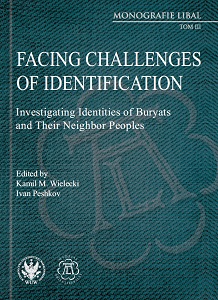Bam and Bamers: Peculiarities of Identity Formation
Bam and Bamers: Peculiarities of Identity Formation
Author(s): Nikolai S. Baikalov
Subject(s): Anthropology, Sociology, Cultural Anthropology / Ethnology
Published by: Wydawnictwa Uniwersytetu Warszawskiego
Keywords: Siberia; Baikal-Amur Railway Mainline (BAM); late socialism; social identity; Soviet mythology; post-Soviet period
Summary/Abstract: The regional identity of the population of the Baikal-Amur Region formed over several decades: from the beginning of the Baikal-Amur Railway Mainline (BAM) construction in the 1970s and 1980s and up to the post-Soviet crisis of the 1990s. The Soviet government attracted people to desolate northern territories with high wages, special benefits, and moral incentives. As a result, a separate socio-cultural community of the “Bamovtsy” (BAMers) was formed. The BAM identity was distinguished by heterogeneous hierarchies of subidentities organized on the basis of territorial, chronological, professional, ethnic and other characteristics. The completion of the BAM construction and the disintegration of the Soviet state led to the isolation and economic degradation of BAM regions. Against this background, the Soviet past of BAM became a myth about the “golden age,” which laid the foundation for preserving the former BAM identity, sought by way of many modern behavioral strategies of local residents, including protest actions, victimization, absenteeism, etc. Acting as a basis for the consolidation of local communities, this identity is transformed very slowly owing to migrations and the natural change of generations.
Book: Facing Challenges of Identification: Investigating Identities of Buryats and Their Neighbor Peoples
- Page Range: 227-253
- Page Count: 27
- Publication Year: 2020
- Language: English
- Content File-PDF

